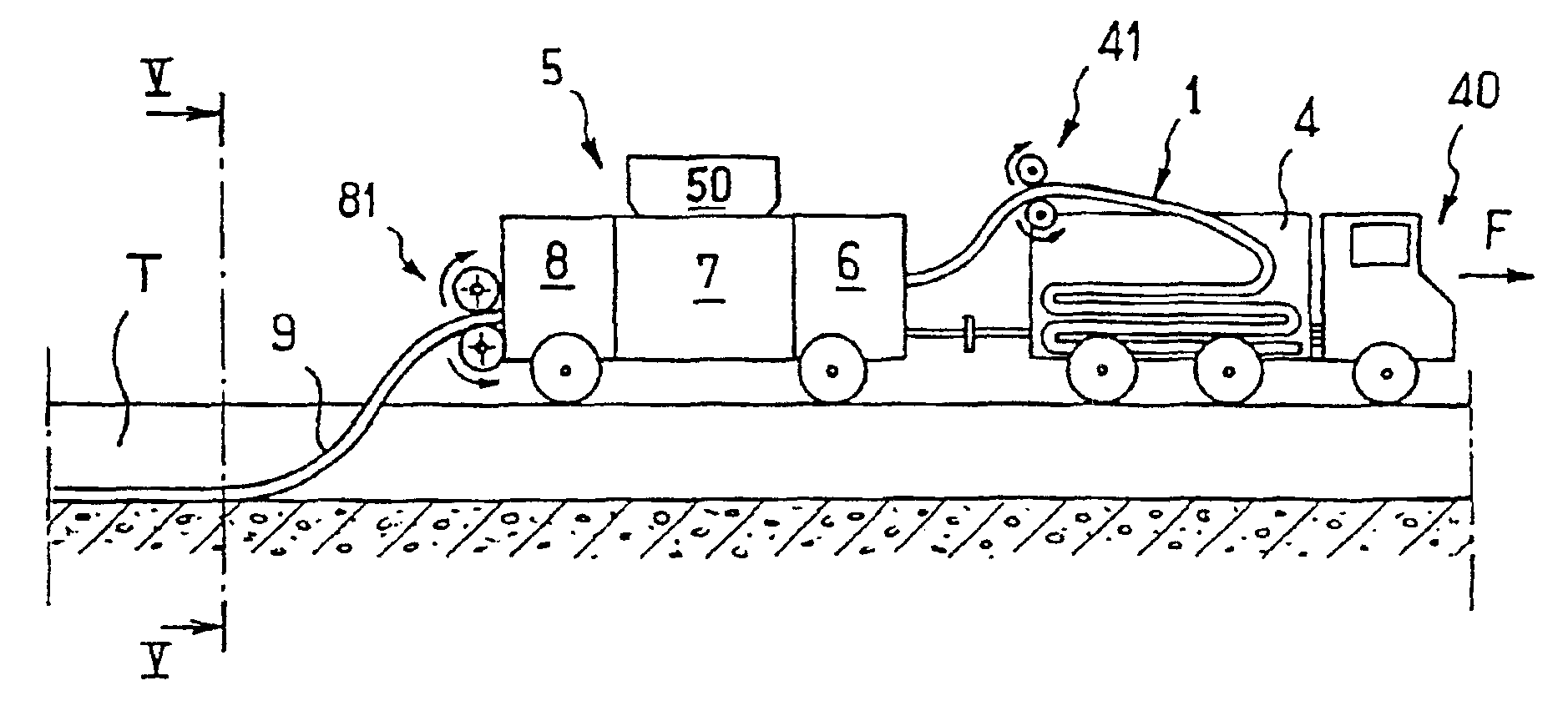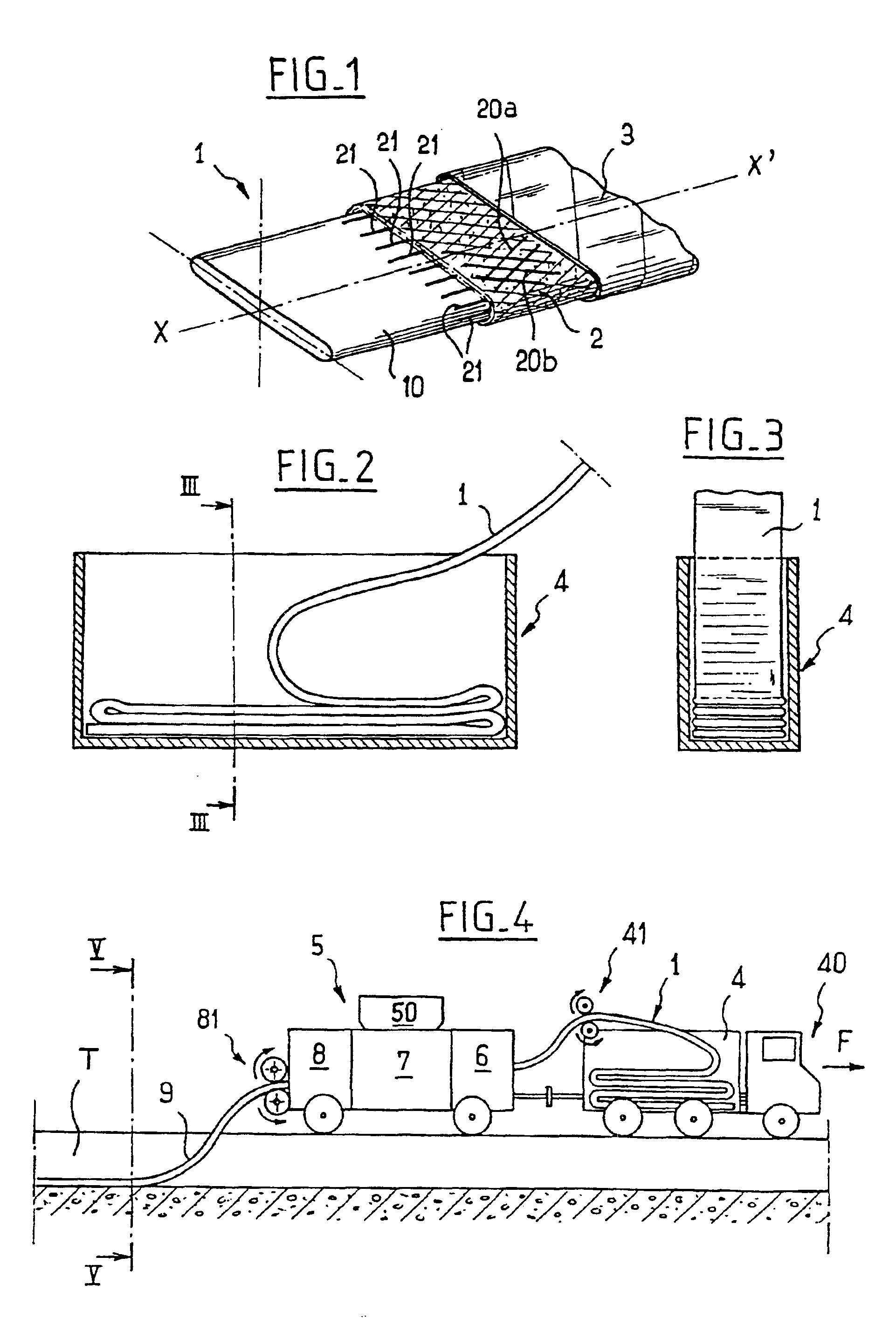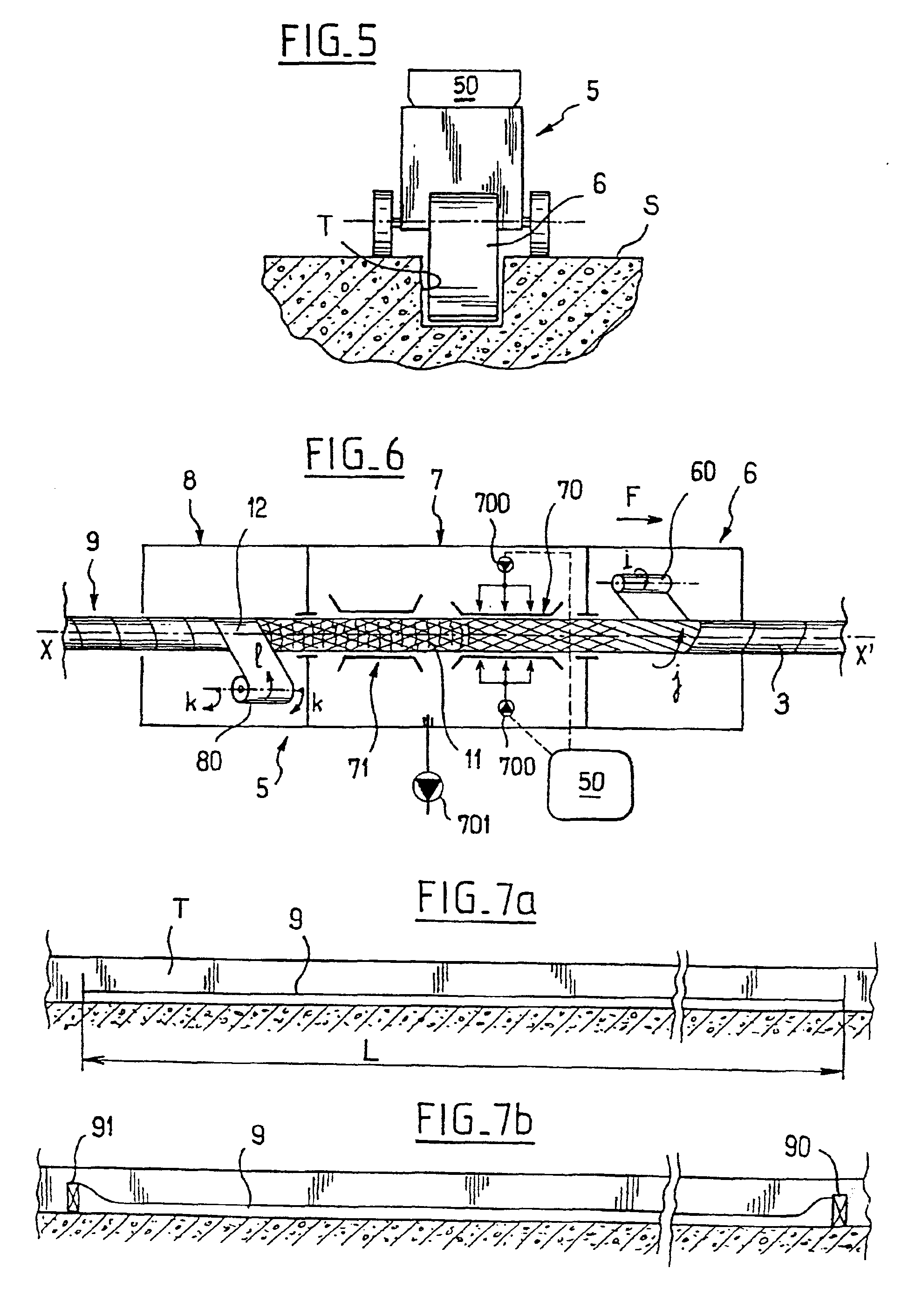Method and installation for laying a cylindrical pipe on a support
a cylindrical pipe and support technology, applied in the direction of sewer pipelines, shaft linings, tunnel linings, etc., can solve the problems of not allowing the use of steel pipes, high cost of pipes, and transportation problems of conventional assembly techniques
- Summary
- Abstract
- Description
- Claims
- Application Information
AI Technical Summary
Benefits of technology
Problems solved by technology
Method used
Image
Examples
Embodiment Construction
[0068]The initial preform 1, illustrated in FIG. 1, is folded over on itself, in this case flattened in the manner of a fire hose empty of water.
[0069]Its wall is flexible and deformable and comprises, from the inside outward, a thin tubular sealing skin 10, a filamentary reinforcement 2 and a protective sheath 3.
[0070]This preform 1, the longitudinal axis of which is denoted by X-X′, may be of relatively great length, for example about 1 000 to 2 000 m.
[0071]The inner skin 10 is, for example, made of synthetic rubber.
[0072]The filamentary reinforcement 2 consists of an assembly of fibers 20, such as glass or carbon fibers for example,' which will give the finished pipe the required mechanical and chemical properties.
[0073]The filamentary reinforcement 2 may advantageously consist of a number of concentric tubular structures inserted one into another, and each formed by a braiding of flat filaments or tapes 20, these being distributed in two series 20a, 20b which intersect symmetric...
PUM
| Property | Measurement | Unit |
|---|---|---|
| diameter | aaaaa | aaaaa |
| diameter | aaaaa | aaaaa |
| length | aaaaa | aaaaa |
Abstract
Description
Claims
Application Information
 Login to View More
Login to View More - R&D
- Intellectual Property
- Life Sciences
- Materials
- Tech Scout
- Unparalleled Data Quality
- Higher Quality Content
- 60% Fewer Hallucinations
Browse by: Latest US Patents, China's latest patents, Technical Efficacy Thesaurus, Application Domain, Technology Topic, Popular Technical Reports.
© 2025 PatSnap. All rights reserved.Legal|Privacy policy|Modern Slavery Act Transparency Statement|Sitemap|About US| Contact US: help@patsnap.com



